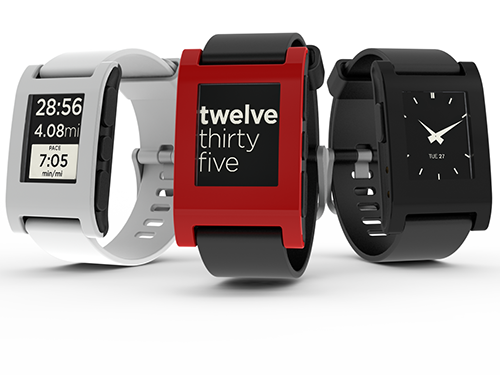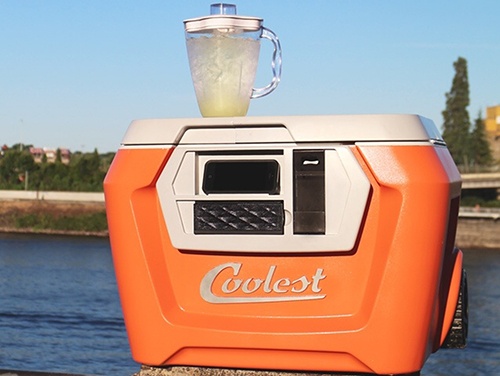
 It would be pretty tough these days not to notice some of the latest products being promoted and funded on Kickstarter and other crowdfunding platforms. They make it look as simple as having a good idea, making a video, and raising a million dollars. Done! Not so fast.
It would be pretty tough these days not to notice some of the latest products being promoted and funded on Kickstarter and other crowdfunding platforms. They make it look as simple as having a good idea, making a video, and raising a million dollars. Done! Not so fast.
The Plan
It all starts with an idea! You start doing research on your idea. You read (our) blogs about invention and product development and get to work. You validate your idea, talk to potential customers, and start to formulate a plan. Now you begin to realize that this is going to take a lot of money. The term ‘tooling’ keeps coming up and it is very expensive. Then there is engineering, software, testing, development, and we’ve not even started to sell the product. You are not a rich person, but you believe that if the world knew about this product idea, you’d be able to sell millions of them.
Now the fun invention project has turned into a business. You are going to need significant outside money and resources to get this thing going. This is when you can’t help but turn to the exciting world of crowd funding.
The Myth
It looks so simple. Make a video, post it on Kickstarter, and the money comes pouring in. All you have to do is build it, ship it and you’re rich. No. According to Sally Outlaw of Peerbackers:
“70% of Kickstarter hardware projects are already funded before they go onto the platform…which means they usually already have angel or VC money behind them before launch”
Ouch! Ask yourself, “Why would I launch my product on Kickstarter if I had angel or VC money?” Because you need it when it comes to hardware. Kickstarter and others are simply pre-sales platforms. Yes, there are some success stories, many of them are from a few years ago before some of the rules changed. I use Kickstarter as an example, but others have similar rules.
There was a huge upset from the Pebble Watch Kickstarter. In 2012, Pebble became the most funded project in Kickstarter history however Pebble could not commit to fulfilling their promises. This caused Kickstarter to change the rules for hardware projects by requiring companies to be very honest about how far along they were in the development process. Renderings are so impressive these days that products look real when they may only exist in a computer. The challenges of actually designing and manufacturing a working product had not yet been conquered and this caused a number of products to fail or deliver late.
The facts are that nowadays many of the most successful products launched through Kickstarter and other crowdfunding websites are mostly complete by the time you see them. A common phrase to hear in campaign videos is ‘we just need to fund our tooling’ or ‘we need to gear up for mass manufacture’. That basically means they are ready to go and want to make sure they can pre-sell enough to warrant the expenditure of hard-tooling and manufacturing setup.
Another important fact about the most successful crowd funded campaigns is that the real campaign starts before the Kickstarter one. Crowdsource-ers network with the media and collect fans, followers and an audience before they launch their public campaign. Nothing draws a crowd like a crowd, and these campaigns ensure they have a crowd waiting to review, talk, and fund before they launch.
The Legends
Pebble

Pebble is a wearable electronics manufacturer launched in 2012. I used Pebble as a failure example, but they ultimately made good on their promises and have managed to launch several more campaigns, albeit far more successfully and with less fuss. In 2015, Pebble raised $20M for their Pebble Time product and is now shipping.
Coolest Cooler

This product takes your typical ice chest to the HNL. It incorporates a blender, Bluetooth speakers, cutting board, and it holds ice too. Originally, when the product launched in 2013, it was a failure.
“As most people who are first launching a project on Kickstarter do, you do some research, you put the product out there, and you hope for and secretly expect that because this idea is great, magically it will get funded,” Grepper said of his failed first campaign. “It was very disappointing.”
He tried again later, with better preparation and it became (at the time) the most successful Kickstarter campaign ever. They still had problems delivering.
SkyBell

The world apparently needed a Wi-Fi doorbell. This product raised $600K in 2013 on Indiegogo. A big advantage with Indiegogo is that even if you don’t hit your funding goal, you can still get the money that was pledged. Kickstarter is all or nothing.
Tips for a Successful Crowd Funding Campaign
- Find funding to get your product through the prototype phase. It needs to work and you need to have a clear path to manufacturing.
- Build your audience before you launch your campaign. Create lead generation pages and social media accounts. And don’t forget networking at off-line events as well to build your audience.
- Create relationships with the media. Figure out who has an interest in the product and who is willing to write about it. Review other similar campaigns on Kickstarter and see which media outlets wrote about them. Then add these journalists to your own outreach list. Media needs content , and if you have a good story, that helps too.
- Get a professional video. Unless you are an awesome videographer and editor, pay someone to make it shine. If you MUST shoot it yourself, make sure viewers can see you, hear you and that you are in an environment that makes sense (ie., film yourself in your work space while talking about the product, not sitting at your kitchen table).
- Hire a professional crowdfunding strategist. Many people have done this before. Pay for their experience as it can be the difference between a wildly successful campaign and one that does not get off the ground. One resource for this service is Peerbackers.
- Set a realistic goal – one that is the minimum you would require to take your product to the next level. Then outline stretch goals in your campaign narrative so backers will be motivated to continue to donate once you reach your initial target. It’s better to be successful with a smaller goal than to be unfunded with a larger one (this varies by platform).
Good luck out there!
